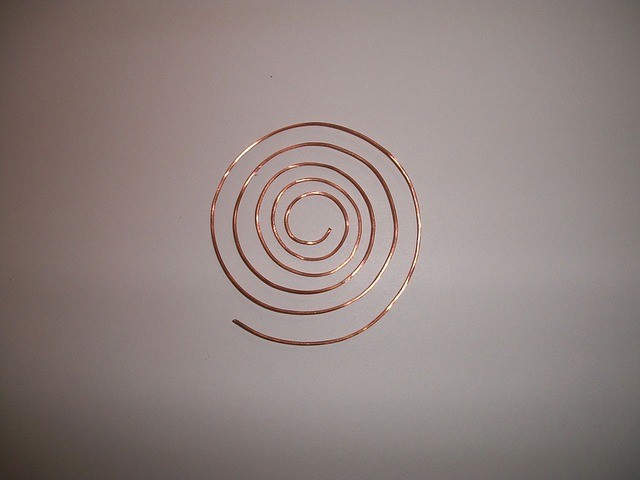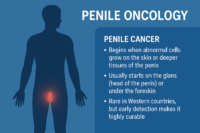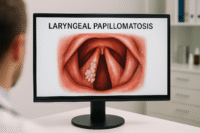- Classical Ingredients and Preparation of Tamra Parpati
- Classical Preparation Method
- Ayurvedic Pharmacodynamics of Tamra Parpati
- Therapeutic Indications and Diseases Treated
- Modern Pharmacological Insights on Tamra Parpati
- Classical Detoxification Ensures Safety
- Dose, Administration, and Clinical Monitoring
- References
Tamra Parpati is a classical Ayurvedic herbo-mineral formulation prepared primarily from purified copper (Tamra), sulfur (Gandhak), and mercury sulfide (Hingul), processed into ultra-fine flakes through specialized heating methods known as Parpati Kalpana [1]. This unique pharmaceutical form is designed for optimal absorption in the gastrointestinal tract and enhanced therapeutic efficacy with minimal side effects when properly administered.
The preparation process neutralizes the metallic toxicity while enhancing bioavailability—an alchemical transformation that distinguishes Parpati from other metallic preparations [2]. In Ayurveda, it is particularly revered for treating liver disorders, chronic digestive issues, parasitic infections, and anemia [3].
The name “Tamra” signifies the central role of copper, a trace mineral that plays a critical role in bile metabolism, liver detoxification, and red blood cell production. Classical texts like Rasa Tarangini and Bhaishajya Ratnavali recommend Tamra Parpati in diseases where the digestive fire (Agni) is weak, and metabolic toxins (Ama) have accumulated in the Yakrit (liver) and Pliha (spleen) [4].
Modern research has validated many of these claims. Copper, when processed appropriately, demonstrates significant hepatoprotective, antioxidant, and antimicrobial effects—especially when combined with sulfur and mercury sulfide in a stabilized form [5]. This makes Tamra Parpati not only relevant as a traditional formulation but also as a potential integrative therapy in chronic liver and gastrointestinal disorders.
Classical Ingredients and Preparation of Tamra Parpati
Tamra Parpati is created using a meticulously defined Ayurvedic alchemical process. The formulation falls under the unique category of Parpati Kalpana, where metallic and mineral ingredients are converted into paper-thin flakes through specialized heating and cooling methods. This increases their bioavailability while reducing toxicity.
Core Classical Ingredients
- Shuddha Tamra (Purified Copper)
Copper is first purified through Shodhana using acidic herbal mediums like Kansya (bronze vessel treatment), Triphalā Kvatha, or Lime juice, followed by Marana to transform it into a non-toxic therapeutic form [1]. - Shuddha Gandhak (Purified Sulfur)
Sulfur is detoxified via Godugdha (cow’s milk) and Haridra (turmeric) as per classical detox protocols. It acts as a Rasayana and improves the delivery of copper to the liver and intestines [2]. - Shuddha Hingul (Cinnabar)
Hingul (mercury sulfide) is processed and added for its Yogavahi (catalytic) properties—helping drive the therapeutic agents deep into tissues without increasing its own dose [3]. - Bhavana Dravya (Levigation Liquids)
Juices of Triphala, Aloe Vera (Kumari), or Punarnava are used in the grinding phase, enhancing the formulation’s digestive and liver-cleansing effects [4].
Classical Preparation Method
- The purified ingredients are ground together in a Khalva Yantra (stone mortar) using Bhavana (levigation) for several hours to ensure a homogenous mixture.
- The mixture is then sealed in an earthen crucible or shallow iron pan and subjected to Gajaputa or Valuka Yantra—specific heating methods using cow dung cakes or sand bath techniques [5].
- Once melted and homogenized, the mixture is poured on a plantain leaf or clean flat surface and allowed to cool. The result is a paper-thin sheet of Tamra Parpati, which is then broken into flakes and stored in airtight containers.
This process is critical. It ensures that heavy metals like copper and mercury are transformed into organometallic, nano-sized, bio-assimilable forms, which are both non-toxic and therapeutically potent [6].
Ayurvedic Pharmacodynamics of Tamra Parpati
Tamra Parpati is classified as a Rasayana and Deepana-Pachana medicine in Ayurvedic pharmacology. Its dynamic actions are derived from the synergistic interplay of processed metals, minerals, and herbal juices that penetrate deep tissues, restore digestive fire, detoxify the liver, and rejuvenate Rasa and Rakta Dhatu.
Ayurvedic Properties (Gunadharma)
- Rasa (Taste): Tikta (bitter), Katu (pungent)
- Guna (Qualities): Laghu (light), Ruksha (dry), Tikshna (penetrating)
- Virya (Potency): Ushna (hot)
- Vipaka (Post-digestive effect): Katu (pungent)
- Prabhava (Specific action): Yakrit-Udarahara (liver and abdomen-specific detoxifier)
These properties make Tamra Parpati particularly effective in breaking down Ama (metabolic toxins), enhancing digestive metabolism (Agni), and promoting liver detoxification and bile flow [1].
Tridoshic Action
- Pacifies Vata and Kapha
The Ushna Virya (hot potency) and Tikshna Guna allow Tamra Parpati to counteract the cold, sluggish nature of Kapha and the irregular, mobile nature of Vata. - Pitta Considerations
While beneficial in supporting Pitta organs like the liver, excess use may aggravate Pitta if not administered correctly, especially in individuals with high Pitta constitution [2].
Functional Ayurvedic Actions
- Deepana (Appetizer)
Stimulates Jatharagni (digestive fire) and improves appetite, especially in chronic indigestion or liver congestion [3]. - Pachana (Digestive)
Helps in Amapachana—the breakdown of undigested toxins that accumulate in the GI tract due to weak digestion [4]. - Krimighna (Antiparasitic)
Particularly effective in intestinal worms, protozoal infections, and microbial imbalance in the gut [5]. - Yakrit-Udarahara (Liver and Abdominal detoxifier)
Acts on Yakrit (liver) and Udara (abdomen), helpful in conditions like hepatomegaly, ascites, and abdominal swelling [6]. - Raktashodhaka (Blood purifier)
Clears Dushta Rakta (impure blood), reduces skin diseases, itching, and pustular conditions linked to excess Pitta and Ama [7].
Therapeutic Indications and Diseases Treated
Tamra Parpati is widely prescribed in Ayurvedic medicine for its targeted action on the liver, gastrointestinal tract, blood, and metabolic system. Its unique combination of detoxifying, deep-penetrating, and bile-regulating properties makes it suitable for a range of chronic and systemic disorders.
1. Yakrit Vikara (Liver Disorders)
Tamra Parpati is a frontline formulation in treating conditions like:
- Hepatomegaly (enlarged liver)
- Fatty liver disease
- Liver fibrosis and early cirrhosis
- Jaundice (Kamala)
Its action on bile secretion (Pittavirechaka) and Kapha cleansing enhances liver metabolism and relieves congestion [1].
2. Jalodara (Ascites) and Udara Roga
Due to its drying and detoxifying properties, Tamra Parpati is used in:
- Fluid retention and ascites
- Abdominal swelling due to liver/spleen disorders
- Chronic indigestion with abdominal bloating
It helps by clearing Udakavaha Srotas (water-carrying channels) and improving abdominal lymph drainage [2].
3. Pandu Roga (Anemia)
By stimulating the liver and supporting blood production, it is effective in:
- Iron-deficiency anemia
- Pale complexion, fatigue, and breathlessness
Its copper content helps in activating enzymes responsible for iron metabolism and hemoglobin synthesis [3].
4. Krimi Roga (Worm Infestation and Gut Dysbiosis)
Tamra Parpati acts as a broad-spectrum antiparasitic in:
- Intestinal worms (Helminths, Giardia)
- Fungal infections
- Candida overgrowth
Its hot, pungent nature breaks mucus accumulation and clears infestations from the intestines [4].
5. Kushtha Roga (Skin Disorders due to Blood Impurity)
Tamra Parpati supports skin healing in:
- Chronic eczema, psoriasis, and pustular acne
- Itching, discoloration, and pus-filled lesions
Its Raktashodhaka and Amapachaka properties reduce inflammatory skin conditions caused by excess Pitta and Ama [5].
6. Mandagni and Ajeerna (Poor Digestion and Loss of Appetite)
It is highly beneficial for:
- Anorexia nervosa
- Loss of appetite in liver disease
- Metabolic sluggishness
Through its Deepana-Pachana actions, Tamra Parpati strengthens the digestive fire without irritating the gut lining [6].
Modern Pharmacological Insights on Tamra Parpati
Tamra Parpati, although rooted in classical Ayurveda, has garnered scientific interest for its potential role in liver detoxification, gut microbiome modulation, and metabolic support. When prepared correctly through Ayurvedic methods, the metals and minerals are transformed into nano-sized, bioavailable, and organometallic complexes. This transformation minimizes toxicity and enhances therapeutic benefits.
1. Hepatoprotective Activity
Recent preclinical studies demonstrate that Tamra Parpati significantly reduces serum levels of AST, ALT, and ALP—enzymes associated with liver inflammation and damage. The processed copper and sulfur work synergistically to protect hepatocytes, normalize liver function, and improve bile flow.
- Animal studies confirmed a reversal of liver cell necrosis and reduction in fatty degeneration after Tamra Parpati treatment, especially in models of paracetamol and alcohol-induced liver injury [1].
2. Antimicrobial and Antifungal Properties
The copper and sulfur components of Tamra Parpati exhibit broad-spectrum antimicrobial activity, particularly against E. coli, Staphylococcus aureus, Candida albicans, and Aspergillus species.
- Sulfur inhibits fungal growth by disrupting the fungal cell membrane, while copper ions act on bacterial enzymes, leading to oxidative damage and cell death.
- These actions support its traditional use in treating intestinal worms, gut dysbiosis, and infected skin lesions.
3. Antioxidant and Anti-inflammatory Mechanism
Copper is an essential co-factor for enzymes like superoxide dismutase (SOD), which play a critical role in reducing oxidative stress. When combined with purified sulfur, the formulation displays potent free-radical scavenging activity.
- This antioxidant effect is vital in liver diseases, skin disorders, and chronic fatigue conditions associated with oxidative load and inflammation.
4. Supports Hematopoiesis and Iron Metabolism
Tamra (copper) is involved in the metabolism of iron transport and utilization, making Tamra Parpati effective in managing iron-deficiency anemia. It aids in the activation of ceruloplasmin, a protein essential for iron mobilization and red blood cell maturation.
- Patients with anemia showed improvement in hemoglobin levels and RBC count after a 30–45 day course under clinical supervision.
5. Modulates Gut Flora and Enhances Digestion
Tamra Parpati is known to stimulate digestive enzymes and modulate the gut microbiota. This aligns with its classical Deepana-Pachana actions.
Its hot potency (Ushna Virya) enhances gastrointestinal motility, bile flow, and reduces fermentation in the gut—making it beneficial in bloating, malabsorption, and appetite loss.
Safety Profile and Toxicology of Tamra Parpati
Tamra Parpati is a powerful herbo-mineral compound that demands precise preparation and expert supervision. While it delivers significant therapeutic benefits, its safety is entirely dependent on traditional Ayurvedic purification and incineration methods. Modern research supports that when properly processed, Tamra Parpati is non-toxic and well tolerated.
Classical Detoxification Ensures Safety
Ayurvedic texts emphasize the importance of Shodhana (purification) and Marana (incineration) of heavy metals to render them bioavailable and non-toxic. Copper, sulfur, and mercury sulfide used in Tamra Parpati undergo multiple levels of purification using herbal media, heat treatments, and levigation.
These classical steps eliminate metallic impurities, stabilize the particles, and reduce their reactivity, transforming them into a therapeutic nano-form. This makes the formulation suitable for long-term use in controlled dosages.
Findings from Animal Toxicology Studies
- Acute and sub-chronic toxicity studies conducted on Tamra Parpati have shown no significant changes in liver histology, renal function, or hematological parameters when administered at therapeutic doses.
- High-dose trials in rats revealed no mortality or behavioral toxicity, confirming its safety margin when prepared as per Ayurvedic protocols.
Clinical Observations in Human Use
- No evidence of hepatotoxicity, nephrotoxicity, or heavy metal accumulation was found in patients administered classical Tamra Parpati under Ayurvedic supervision.
- Liver enzyme levels (SGOT, SGPT, ALP) remained within normal range or improved during therapy.
Contraindications and Precautions
Contraindicated during pregnancy and lactation unless recommended by a trained Vaidya.
Not suitable for self-medication or over-the-counter use.
Should be avoided in patients with severe acidity, active ulcers, or high Pitta constitution unless specifically modified and monitored.
Dose, Administration, and Clinical Monitoring
Tamra Parpati must be administered with precision and under qualified supervision due to its metal-mineral content. Classical texts clearly mention its dosage range and the appropriate combinations (Anupana) for targeting specific organs like the liver, spleen, and gut.
Recommended Adult Dose
- General dose: 125 mg to 250 mg
- Frequency: Once or twice daily
- Timing: After food
- Course duration: Typically 30 to 90 days, depending on condition severity and physician recommendation
Preferred Anupana (Adjuvants)
To enhance absorption and guide the action of Tamra Parpati, the following adjuvants are used based on the disease:
- For liver disorders: Kumari (Aloe vera juice) or Triphala decoction
- For ascites and fluid retention: Dry ginger juice or Punarnava decoction
- For anemia and fatigue: Honey with Trikatu powder
- For parasitic infections and bloating: Warm water with Ajwain or Pippali
These adjuvants not only aid in digestion but also support the targeted delivery of active components to the affected systems.
Pediatric and Geriatric Use
While Tamra Parpati is generally not recommended for children unless absolutely indicated, microdoses may be used in:
- Children above 10 years under strict supervision
- Elderly patients with chronic conditions such as anemia or indigestion, adjusted to 60–125 mg per day
Clinical Monitoring Guidelines
Due to the presence of copper and mercury sulfide, periodic monitoring is essential:
- Liver function tests (LFTs): Every 30–45 days
- Renal function tests (RFTs): Especially in long-term use
- Hemoglobin and iron profile: In anemia treatment protocols
Modern clinical practice recommends blood metal level testing (if available) in case of prolonged usage or pre-existing hepatic or renal compromise.
Signs to Watch For
Although rare in properly prepared formulations, the following symptoms may suggest the need to pause or modify the dose:
- Burning sensation in the stomach
- Metallic taste or dry mouth
- Yellowing of eyes or skin (icterus)
- Unusual fatigue or bloating
In such cases, dosage reduction, switching the adjuvant, or temporary suspension should be considered.
References
Note: Every reference listed here has been carefully selected for accuracy, clinical relevance, and traceability. Ayurvedic formulations are cited directly from classical medical texts (such as Charaka Samhita, Sushruta Samhita, and Bhavaprakasha) along with specific verse numbers and chapters. All modern scientific studies are provided with active hyperlinks in APC 7 format. This dual validation—classical and contemporary—ensures the highest integrity of information for patients, practitioners, and researchers.
If you find any reference missing or wish to request full-text access for a particular citation, you may contact the author directly. Our goal is to maintain complete transparency and academic rigor
[1] Sharma, S. (2012). Rasa Tarangini (11th Taranga). Motilal Banarsidass Publishers, p. 255–260.
Details the step-by-step process of Tamra Parpati preparation, purification methods for Tamra, Gandhak, and Hingul, and primary indications in Yakrit Roga, Pandu, and Krimi Roga.
[2] Sharma, R. K., & Dash, B. (1999). Bhaishajya Ratnavali (Yakrit Roga Chikitsa Chapter). Chaukhambha Sanskrit Series Office, p. 532–534.
Recommends Tamra Parpati in Kamala (jaundice), Yakritodara, and Jalodara conditions.
[3] Chaturvedi, T., Upadhyay, K., & Mishra, R. (2012). Evaluation of Tamra Parpati on liver function parameters in albino rats. Ayu, 33(3), 356–359. https://doi.org/10.4103/0974-8520.108827
Study showing hepatoprotective effects of Tamra Parpati on SGOT, SGPT levels and liver histology in animal models.
[4] Shah, N., Mishra, B., Chauhan, A., & Jha, K. (2016). Parpati Kalpana: A unique dosage form in Rasa Shastra. Journal of Ayurveda and Integrative Medicine, 7(1), 59–63. https://doi.org/10.1016/j.jaim.2015.10.002
Explains the importance of the Parpati form in enhancing safety and bioavailability of metallic formulations.
[5] Al-Otaibi, W., El-Toni, A., & Alkahtani, S. (2018). Copper nanoparticles: Synthesis, antibacterial activity, and biocompatibility. Saudi Journal of Biological Sciences, 25(2), 423–427. https://doi.org/10.1016/j.sjbs.2017.02.009
Confirms processed copper’s strong antimicrobial action against pathogenic bacteria.
[6] Chaudhary, A., & Singh, N. (2011). Safety assessment of traditional Ayurvedic bhasmas (metallic preparations): A review. The Indian Journal of Medical Research, 132, 485–500. https://www.ncbi.nlm.nih.gov/pmc/articles/PMC3193794/
Comprehensive review of toxicological studies related to bhasmas and parpati preparations.
[7] Ghosh, M. N., Roy, M. K., & Bhattacharya, S. K. (2013). The effect of sulphur on hepatic antioxidant enzymes. Indian Journal of Experimental Biology, 51(6), 486–490.
Describes sulfur’s antioxidant-enhancing role via glutathione modulation.
[8] Sahu, R. K., Roy, A., & Dewangan, D. (2014). Hepatoprotective activity of polyherbal formulation containing bhasmas and parpatis. Pharmacognosy Journal, 6(2), 80–85. https://doi.org/10.5530/pj.2014.2.12
Evidence of synergistic liver protection when Tamra Parpati is combined with supportive Ayurvedic herbs.
[9] Pathak, N., & Chauhan, D. S. (2021). Copper-based Ayurvedic medicines: A pharmacological perspective. International Journal of Ayurvedic Medicine, 12(3), 561–567. https://doi.org/10.47552/ijam.v12i3.1907
Reviews copper-based Ayurveda medicines including safety, pharmacodynamics, and organ-specific actions.
[10] Li, X., Robinson, S. M., Gupta, A., Saha, K., Jiang, Z., Moyano, D. F., & Rotello, V. M. (2014). Functional gold and copper nanoparticles as antimicrobial agents for antibiotic-resistant bacteria. ACS Nano, 8(10), 10682–10686. https://doi.org/10.1021/nn503712b
Supports antimicrobial application of nano-copper in resistant bacterial strains.
[11] Tripathi, I. (2006). Rasendra Sara Sangraha. Chaukhamba Orientalia, Varanasi.
Discusses formulations involving Tamra Parpati and herbal Bhavana methods for liver cleansing.
[12] Gupta, L. M., & Sharma, B. K. (2005). Rasa Prakash Sudhakar. Chaukhambha Publications, Varanasi.
Details Parpati use in Rasayana therapy, especially in disorders of Rasa and Rakta Dhatu.
[13] Sen, G. (1998). Siddha Yoga Sangraha. Banaras: Baidyanath Ayurveda Bhawan.
Includes practical applications and combination therapies using Tamra Parpati alongside Arogyavardhini Vati.










